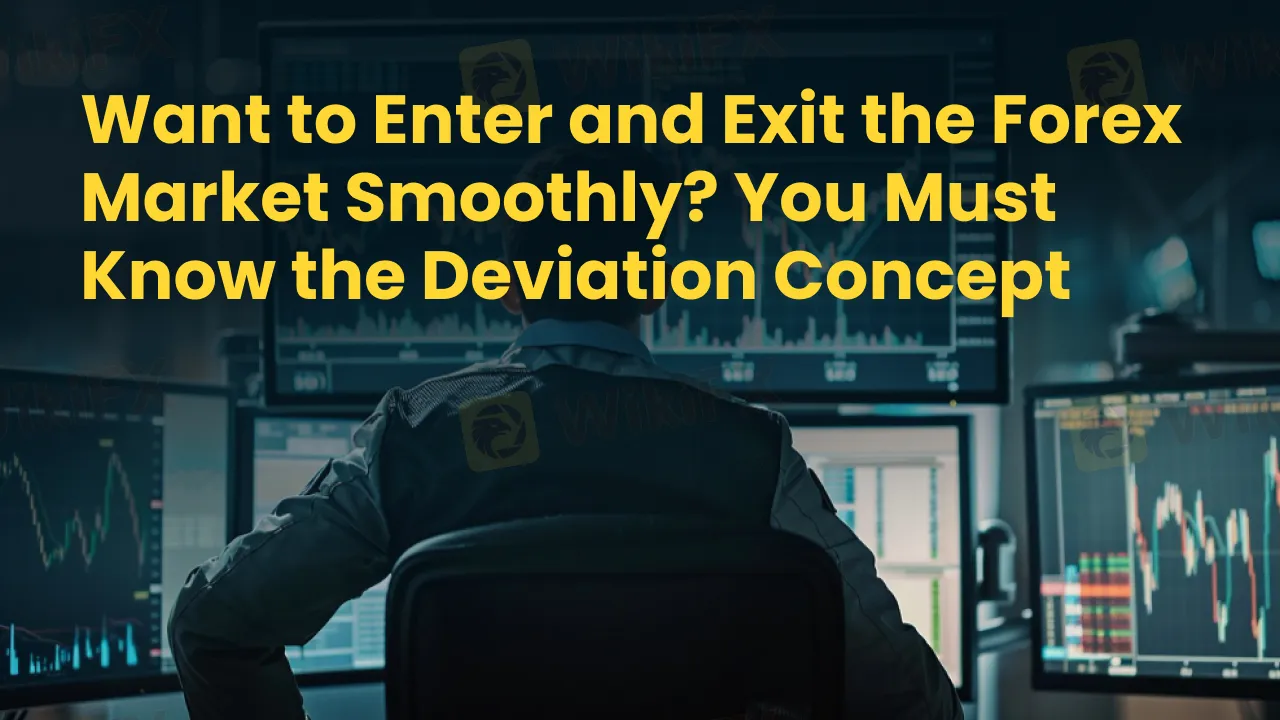Want to Enter and Exit the Forex Market Smoothly? You Must Know the Deviation Concept
Abstract:Timing your entry and exit from the rewarding yet unpredictable forex market is critical to building wealth and staying on course with your financial goals. The concept that helps you execute it is deviation. It is a crucial metric that helps measure the fluctuating foreign exchange market. Learn about it in this in-depth guide.

Timing your entry and exit from the rewarding yet unpredictable forex market is critical to building wealth and staying on course with your financial goals. The concept that helps you execute it is deviation. It is a crucial metric that helps measure the fluctuating foreign exchange market. Traders can use this tool to analyze and respond to unpredictable events that shape the forex market. As a trader, if you want to make a perfect entry and exit, you must know - what is deviation in forex? The quicker you learn it, the smoother your forex journey. In this article, we will disclose this concept that you can leverage in forex trading.
What is Deviation in Forex?
The deviation remains a statistical measure showing the extent of a data sets variation from the average or mean value. This measure in forex trading is usually ascertained using standard deviation. It helps traders assess the extent of volatility or variability in currency price movements. By understanding standard deviation in trading, you can assess the market uncertainty and therefore enter and exit it with adequate risk management.
Exploring the Concept of Standard Deviation in Forex
Standard deviation in forex trading is the extent of variance between actual and expected price movements in currency pairs. The extent of price fluctuation from its average over a specific period is quantified.
Standard Deviation Formula in Forex
Standard Deviation = √Σ [(X - μ)² / N]
Where
X - Means individual data points (demonstrating price values)
μ (mu) - The mean (average) of the data
N - Total Number of Data Points
A greater standard deviation points to enhanced price variability and risk. You can leverage it across various timeframes. These include short-term intraday forex trading and long-term investment analysis.
An Example of - What is Deviation in Forex?
We felt understanding deviation in forex becomes easy with an example. So, we have introduced an example using the Deviation Indicator in Metatrader 4 and the Bollinger Bands indicator. Here, a deviation means the number of standard deviations used to compute the Bollinger Bands width.
Bollinger Bands are formed by three lines - a middle line along an upper band and a lower band. A middle line usually remains a 20-period simple moving average. The standard deviation resulting from the price data is used to calculate the upper and lower bands.
Interpreting the Deviation in Forex
Interpreting deviation in forex using the Deviation Indicator in MetaTrader and Bollinger Bands is easy by understanding these basics.
Choose the Bollinger Bands Indicator
You can integrate the Bollinger Bands indicator into the forex chart in MetaTrader by choosing it from a wide range of indicators.
Set the Deviation
Upon adding the Bollinger Bands indicator, you can specify the deviation, which helps assess the width of the bands. 2.0, which remains the common deviation value, means standard deviations with the upper and lower bands away from the 20-period small moving average, i.e., the middle line.
Deviation Interpretation
A standard deviation of 2.0 means the Bollinger Bands will have nearly 95% of price data within their width. As the price approaches or reaches the upper band, it indicates a relatively overbought condition. As it comes closer to or reaches the lower band, it means it is relatively oversold.
The Application of Deviation in Forex Trading
Spotting Trading Opportunities
Standard deviation in trading can let traders evaluate the extent of price volatility in the foreign exchange market. When applying Bollinger Bands, you can utilize the deviation setting to spot potential entry and exit points.
Risk Management
You can analyze deviation to manage risks by changing the trading position sizes. In highly volatile conditions, the deviation rises. In such cases, you can take smaller positions to manage risks. As opposed to in less volatile conditions, you can take large positions.
Market Entries and Exits
There are two concepts - Breakout Trading and Reversal Trading - associated with market entries and exits for forex investors.
Breakout Trading - Deviation helps spot potential breakout points. As the price goes past the Bollinger Bands, it may signal a new trend or a drastic price movement. They can hint at market entry and exit times.
Reversal Trading - You can also spot reversal opportunities with deviation. As the price reaches extremely high or low levels of the Bollinger Bands, you can view this as a potential reversal point to plan your entry or exit.
Wrapping Up
In the dynamic world of forex trading, understanding deviation—especially standard deviation—is not just a technical advantage but a necessity. It empowers traders to interpret market volatility, anticipate potential breakouts or reversals, and make informed decisions about when to enter or exit trades. Tools like the Bollinger Bands and Deviation Indicator in MetaTrader make it easier to apply this concept practically, helping you manage risk and optimize returns.
WikiFX Broker
Latest News
What Is Indices in Forex? A Beginner’s Guide to Trading Forex Indices
FBI Issues Urgent Warning on Crypto Recovery Scams
Robinhood Moves Toward MENA Expansion with Dubai DFSA License Application
How to Use Retracement in Trading
CySEC warns the public against 17 investment websites
Germany's Industrial Core Is Collapsing Under The US Trade Deal And The Green Agenda
Understanding Forex Spread Cost and How to Minimize It
Juno Markets: A Closer Look at Its Licenses
Complaints Against Weltrade | Traders Can’t Get Their Money Back
Fake Trader Faces 20 Years & RM9 Million Fine for RM1.45 Mil Derivatives Scam
Rate Calc

